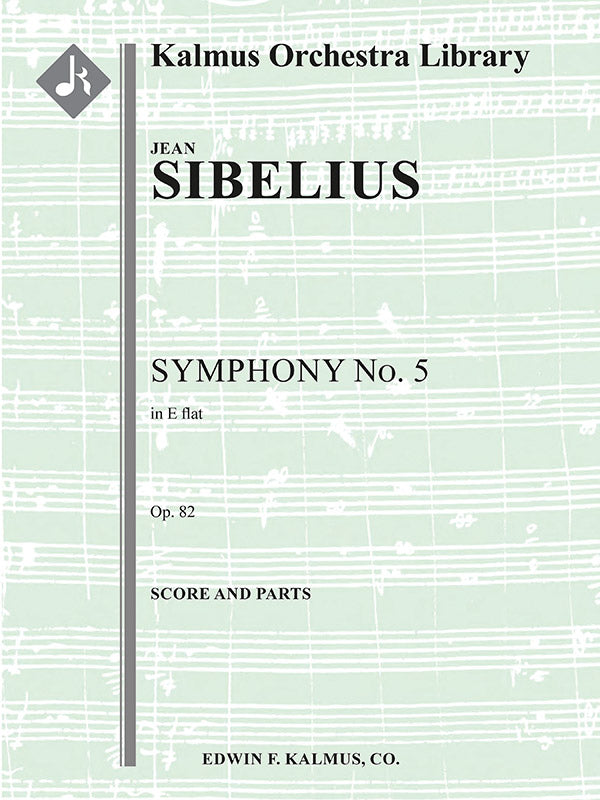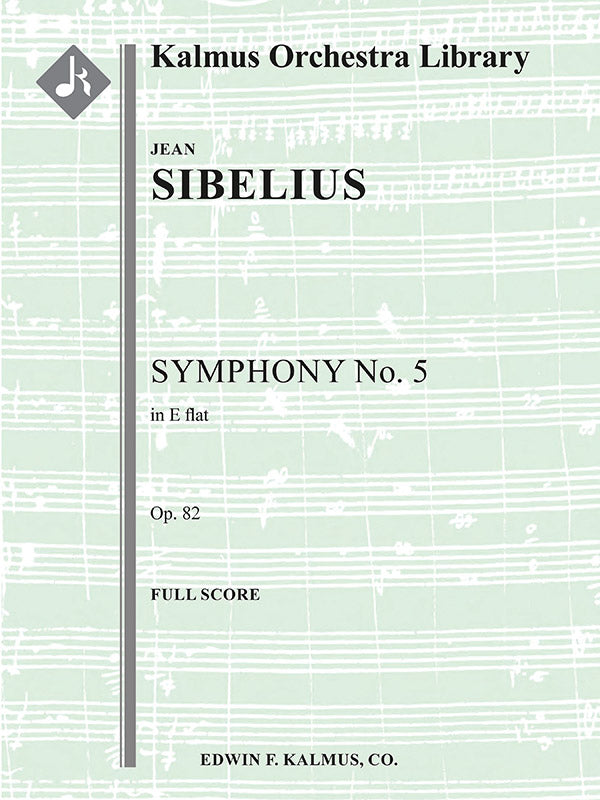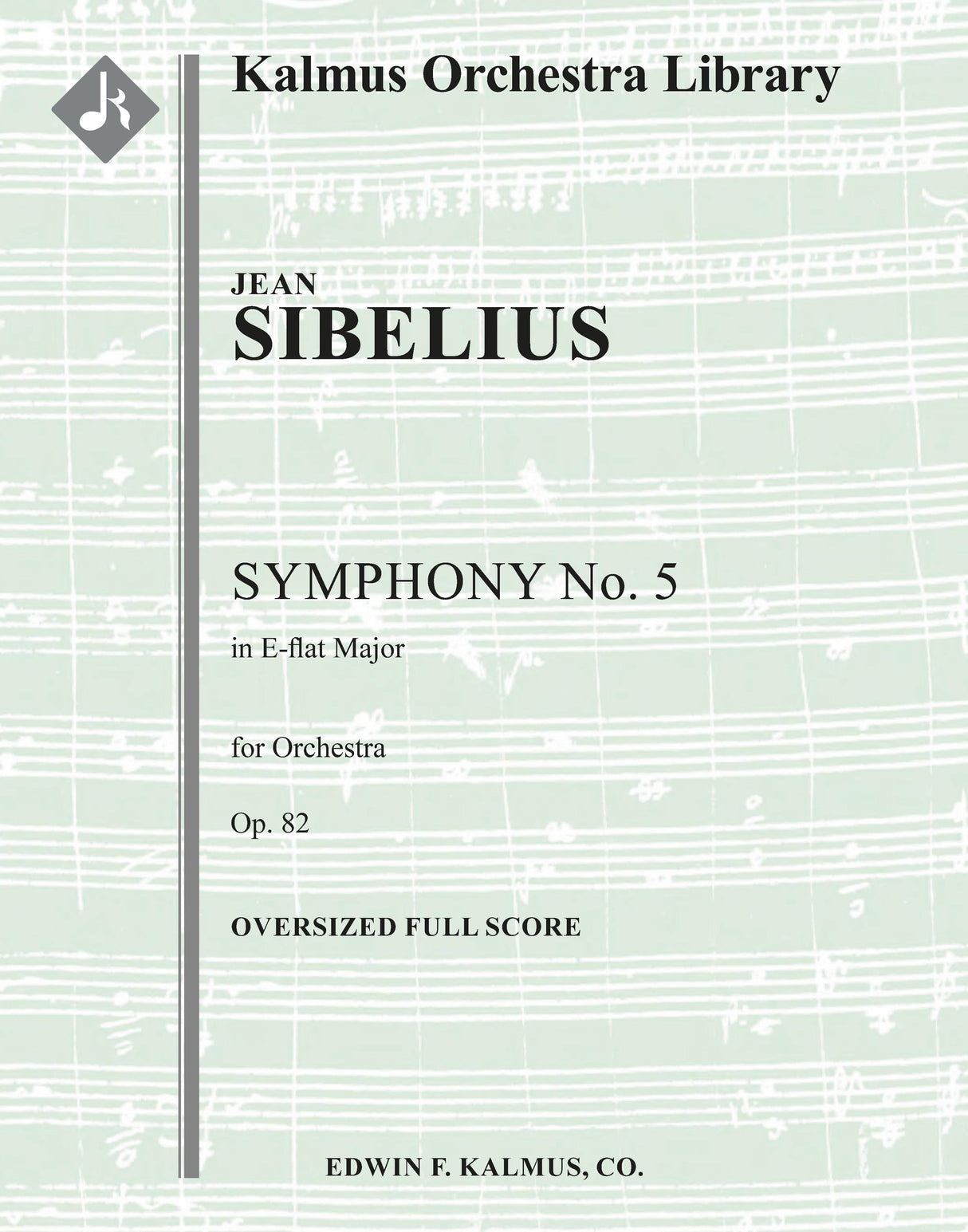Sibelius: Symphony No. 5 in E-flat Major, Op. 82
Expected to ship in about a week.
- Composer: Jean Sibelius (1865-1957)
- Instrumentation: Orchestra
- Work: Symphony No. 5 in E-flat Major, Op. 82
- UPC:
Description
Originally composed and premiered in 1915 from a commission by the Finnish government in honor of his 50th birthday, Jean Sibelius' (1865-1957) SYMPHONY NO. 5 in E-flat, Op. 82 saw two revisions, one in 1916 and the final version performed today in 1919. in four movements initially, Sibelius reworked his most popular symphony into three movements in the midst of his own internal debate about whether he should continue composing in the late Romantic style with which he was so familiar or follow the compositional changes that were taking place with modernists such as Schoenberg or Stravinsky or impressionists such as Ravel and Debussy.
This crisis was resolved in his fifth symphony, where the composer chose to stay within the frames of harmonic language of late-19th century Romanticism, instead opting to innovate in the realms of macrostructure (three movements instead of four) and instrumental coloring (the swaying motif in the horns during the third movement which was inspired by swan-calls). of the 1919 revision, Sibelius strove to give the work, "a more human form, more down-to-earth, more vivid."
The 1915 premiere took place on December 8th, 1915, performed by the Helsinki Philharmonic Orchestra, with the composer conducting. The 1919 version was premiered by the same ensemble and conductor on November 24, 1919.
Instrumentation in set: 2.2.2.2: 4.3.3.0: Timp: Str (9-8-7-6-5).
Publishers use a lot of words to describe what they sell, and we know it can be confusing. We've tried to be as clear as possible to make sure you get exactly what you are looking for. Below are descriptions of the terms that we use to describe the various formats that music often comes in.
Choral Score
A score for vocalists that only contains the vocal lines. The instrumental parts are not there for reference. Generally, cheaper than a vocal score and requires multiple copies for purchase.
Facsimile
Reproductions of the original hand-written scores from the composer.
Full Score
For ensemble music, this indicates that the edition contains all parts on a single system (there are not separate parts for each player). In larger ensembles, this is for the conductor.
Hardcover
Hardbound. Generally either linen-covered or half-leather.
Orchestral Parts
Similar to a wind set, this is a collection of parts. In the case of strings, the numbers listed are the number of copies included, though generally these are available individually (often with minimum quantities required).
Paperback
When publishers offer multiple bindings (e.g. hardcover) or study scores, this is the "standard" version. If you're planning to play the music, this is probably what you want.
Performance / Playing Score
A score of the music containing all parts on one system, intended for players to share. There are not separate parts for each player.
Set of Parts
For ensemble music, this indicates that there are separate individual parts for each player.
Solo Part with Piano Reduction
For solo pieces with orchestra, this is a version that contains a piano reduction of the orchestra parts. For piano pieces, two copies are typically needed for performance.
Study Score
A small (think choral size) copy of the complete score meant for studying, and not playing. They make great add-ons when learning concertos and small chamber works.
Vocal Score
A score prepared for vocalists that includes the piano/organ part or a reduction of the instrumental parts.
Wind Set
For orchestral music, this is a collection of wind and percussion parts. The specific quantities of each instrument are notated.
With Audio
In addition to the printed music, the edition contains recordings of the pieces. This may be an included CD, or access to files on the internet.
With / Without Fingering (Markings)
Some publishers prepare two copies - a pure Urtext edition that includes no fingering (or bowing) suggestions and a lightly edited version that includes a minimal number of editorial markings.




